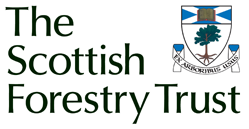The multi-trophic consequences of ash dieback – a baseline survey of Wytham Woods
Carried out by: University of Oxford
Summary Description:
European ash has become the latest victim to the fungal pathogen (Hymenoscyphus fraxineus) responsible for ash dieback. Ash is the third most abundant broadleaved tree species in British woodlands and the disease is therefore expected to have a major impact on woodland ecosystems.
Ash dieback has recently been detected in Wytham Woods, Oxford’s iconic ecological observatory where many of the foundations of modern ecology were laid. Thanks to years of research across many areas of ecology, Wytham is probably the only place in the world that is positioned to track the full ecological consequences of the disease.
In this study we aim to gather baseline data in low and high ash areas of Wytham Woods before the impacts of the disease become prominent. These data will be used to apply for funds to track changes due to ash dieback which may be used to inform woodland management in the UK.
Timescale: 2018-2019
SFT Funds Awarded: £20,000
Project Outcomes:
The spread of plant and animal diseases in an increasingly interconnected world is a key feature of contemporary global change. The European ash tree (Fraxinus excelsior) has become the latest high-profile victim to the current plague of novel pathogens affecting tree species (McKinney et al. 2012). The fungal pathogen Hymenoscyphus fraxineus was first detected in the 1990s in Poland, and has since spread across Europe, devastating ash populations and killing up to 90% of individuals. Ash is a dominant species in some European forest communities, with an array of associations with plants and insects, so consequences of its loss for forest ecology and biodiversity are severe and widespread.
In February 2012, the pathogen was first detected in the UK and has now spread to Wytham Woods, Oxford University’s long-term ecological laboratory. As yet, there is little clear understanding of what governs this spread, but there is an emerging expert consensus that the vast majority of ash trees are likely to die in the next few years or at the least suffer severe crown thinning. The consequences for all aspects of ecology at Wytham and elsewhere will be profound. Hence, integrated studies of its impact across taxa and woodland functions are needed.
While a rich baseline dataset is available for the woodland some key data were missing at the start of this project, either completely or partially. The main objective of this grant was to gather missing baseline data before the disease become too prominent. Specifically we aimed to
(a) quantify invertebrates in the soil, leaf-litter, and undergrowth,
(b) identify bird species in Wytham using standard British Trust for Ornithology (BTO) protocols,
(c) examine the soil and litter microbial diversity (fungal and bacterial),
(d) conduct small mammal (mice, voles and shrews) trapping, and
(e) set up stations for monitoring of microclimate conditions.
(a) Seasonal invertebrate data from two forest types (high and low ash densities) were collected from 60 replicated plots across Wytham Woods between May 2018 - November 2019 (sampling took place quarterly). Additionally, a range of environmental variables were gathered at each plot during sampling including canopy cover, soil moisture and temperature, litter composition, and bulk density. The intense sampling and the extraction of all invertebrates from the litter and soil have provided valuable data on seasonal invertebrate abundance and biomass.
(b) Bird monitoring took place in spring 2017 and 2018 in 25 locations in Wytham Woods. The locations were visited twice during each monitoring event, seven days apart.
(c) Litter and soil were gathered in August 2018 for microbial analyses at CEH, Wallingford.
(d) Small mammal trapping took place fortnightly in a four-hectare grid in Wytham Woods. The continuous small mammal trapping has provided seasonal baseline data that will enable better understanding of the impact of ash dieback on subsequent small mammal movements and habitat preferences.
(e) Microclimate variability is an important parameter for understanding habitat change due to ash dieback. 15 microclimate stations, one each in each ash treatment plot, were located in five areas (three treatments; control low ash density, control high ash density, ring barking ash to speed up ash dieback, and five replications of each treatment).
The funding from the Scottish Forestry Trust has enabled us to greatly improve the ash dieback related baseline data for Wytham Woods. This will facilitate us to track the consequences of ash dieback on ecosystem functioning over the next few years. The Woods are a microcosm of broadleaved lowland woods in England and subsequently the results have a much wider significance than just the one site. Additionally, the baseline data of microorganisms, invertebrates, birds and small mammals will provide an invaluable source of baseline information for future studies. We are grateful to the Scottish Forestry Trust for supporting this project.
